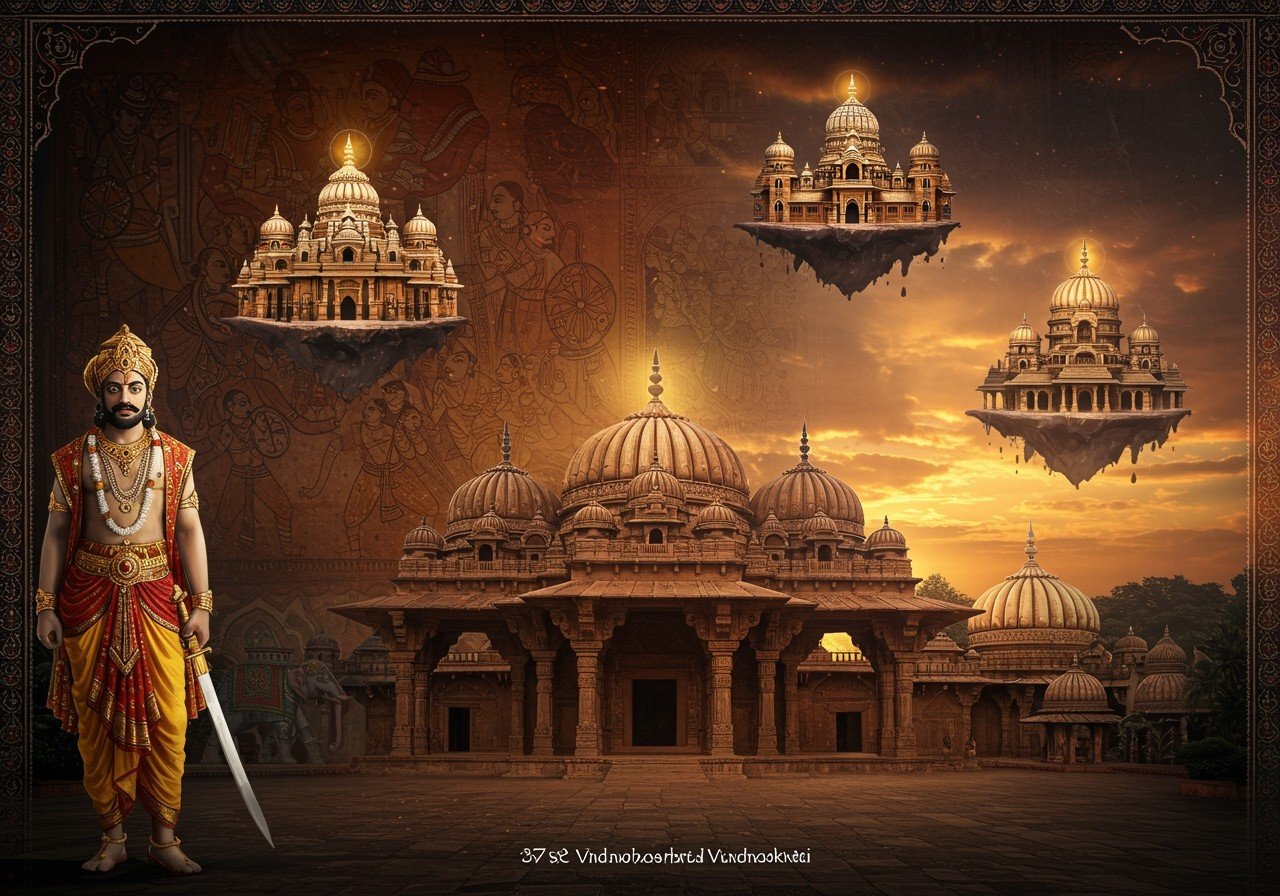The Vakataka Dynasty: A Reign of Power and Culture in Ancient India

The Vakataka Dynasty stands as a prominent landmark in the tapestry of ancient Indian history. Flourishing from the mid-3rd century CE to the end of the 5th century CE, this dynasty, originating in the central Deccan region, left an indelible mark on the subcontinent’s art, culture, and political landscape. Their empire stretched impressively, encompassing territories from Malwa and Gujarat in the north to the Tungabhadra River in the south, and from the Arabian Sea in the west to Chhattisgarh in the east.
Origins and Rise to Prominence
The dynasty’s foundation was laid by Vindhyashakti around 250 CE. His name, signifying “Power of the Vindhyas,” aptly reflects the dynasty’s growing influence across central and southern India. Emerging after the Satavahanas, the Vakatakas, claiming Brahmanical lineage, were contemporaries of the mighty Gupta Empire. Vindhyashakti’s reign witnessed initial territorial expansions and strategic military campaigns, setting the stage for the dynasty’s future dominance.
Key Rulers and Capitals: Centers of Power and Culture
Pravarasena I, Vindhyashakti’s son, significantly expanded the Vakataka realm, ushering in a golden age. His reign, marked by military conquests and administrative reforms, saw the establishment of prominent capitals like Nandivardhana (near present-day Nagpur) and Pravarapura. These centers became hubs of power, trade, and cultural efflorescence. Architectural marvels, including temples and public works, arose, alongside a flourishing of arts and literature, reflecting the dynasty’s patronage and prosperity.
Later, Rudrasena II’s reign further solidified the Vakataka’s position. His marriage to Prabhavatigupta, daughter of Gupta Emperor Chandragupta II, forged a powerful alliance, fostering political stability, economic prosperity, and rich cultural exchange. This period witnessed a vibrant fusion of artistic and architectural styles, contributing to a unique blend of Vakataka and Gupta traditions.
The Decline of an Empire
Despite its glorious zenith, the Vakataka Dynasty eventually succumbed to internal strife and external pressures. Succession disputes and conflicts within the ruling family weakened the empire from within. Simultaneously, external threats from rival kingdoms and invasions further destabilized the dynasty, ultimately leading to its decline towards the end of the 5th century CE. The neglect of political science and indulgence in pleasures by Harishena’s son further hastened the downfall.
FAQs: Unraveling the Vakataka Dynasty
Who founded the Vakataka Dynasty? Vindhyashakti, around the mid-3rd century CE, laid the foundation for this influential dynasty.
What was the capital of the Vakataka Dynasty? Nandivardhana, situated near present-day Nagpur, served as the prominent capital. Another significant capital was Vatsagulma, located in present-day Maharashtra.
When did the Vakataka Dynasty rule? The Vakataka Dynasty’s reign spanned from the mid-3rd century CE to the end of the 5th century CE, a period of significant cultural and political development in India.
Why is the Vakataka Dynasty important in Indian history? The Vakataka Dynasty holds a crucial place in Indian history due to its substantial contributions to art, architecture, and political structures during its time. Their patronage of the Ajanta Caves, a UNESCO World Heritage site, exemplifies their cultural legacy.
Connect with the Vakataka Legacy through Poojn.in
At Poojn.in, India’s leading cultural goods and services store, we offer a unique opportunity to connect with the rich spiritual traditions of the Vakataka era. Explore our diverse collection of authentic puja items, carefully curated to reflect the ceremonial practices of this historical period:
-
Pure copper and brass items: Discover exquisite pieces reminiscent of those used in ancient Vakataka temples, handcrafted with meticulous detail and reverence for tradition. Explore our collection of copper and brass puja items.
-
Traditional puja thalis: Enhance your spiritual practices with beautifully crafted thalis, echoing the ceremonial artistry of the Vakataka period. Find the perfect puja thali for your spiritual needs.
-
Authentic dhoop and agarbatti: Immerse your senses in the sacred fragrances of traditionally made dhoop and agarbatti, following age-old methods that connect you to the spiritual essence of the past. Experience the traditional aromas with our dhoop and agarbatti collection.
-
Sacred items for offerings: Discover a wide range of sacred items for temple offerings and home worship, enabling you to continue the spiritual traditions passed down through generations. Learn more about the significance of temple offerings.
Visit Poojn.in today to explore our complete collection and experience the rich heritage of the Vakataka Dynasty. We offer pan-India delivery, ensuring that authentic puja supplies reach your doorstep with utmost care and sanctity.
For bulk orders or inquiries regarding temple supplies and cultural institution needs, please contact our customer service team. We are committed to providing competitive prices, timely delivery, and the highest standards of quality and authenticity for all your puja requirements.


